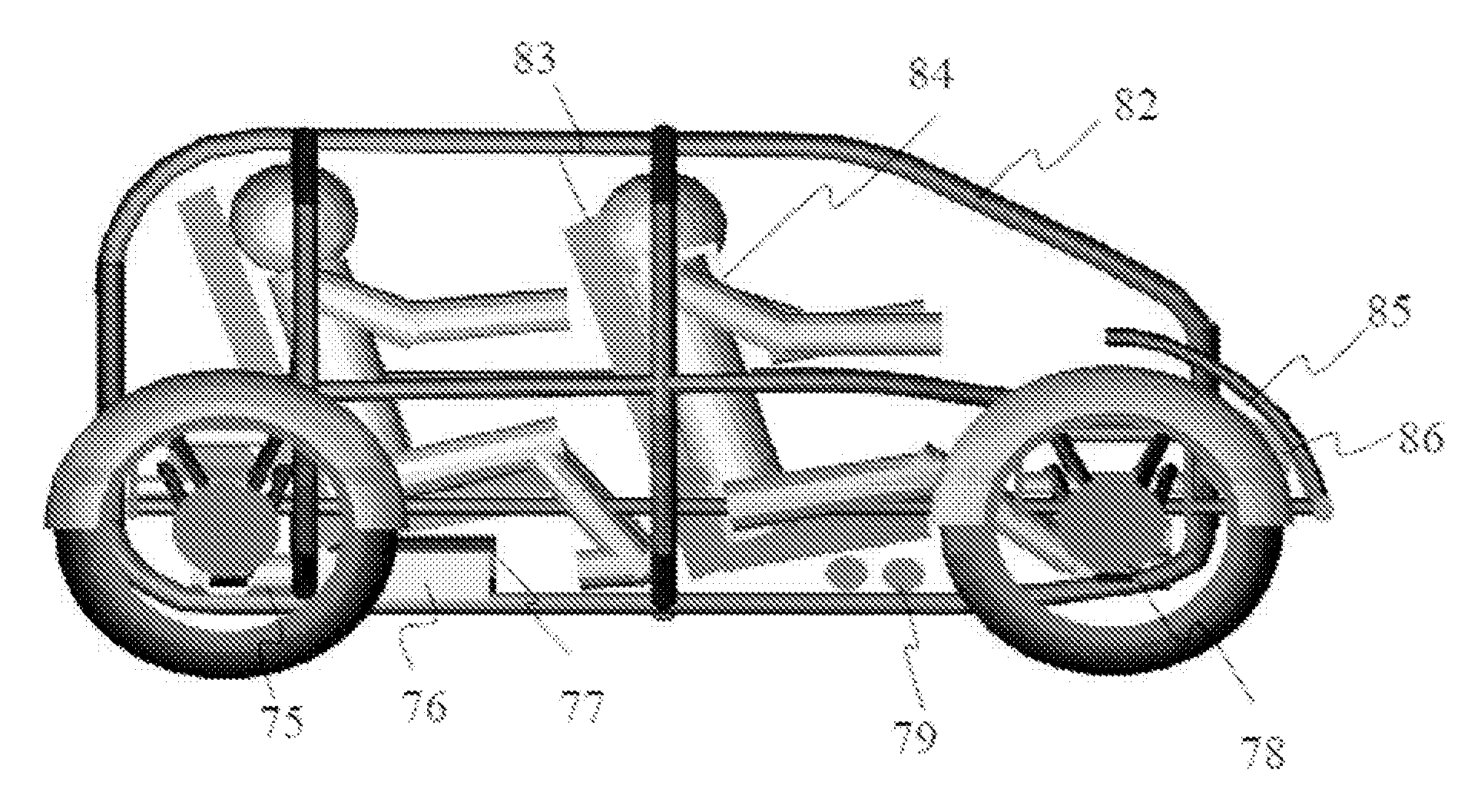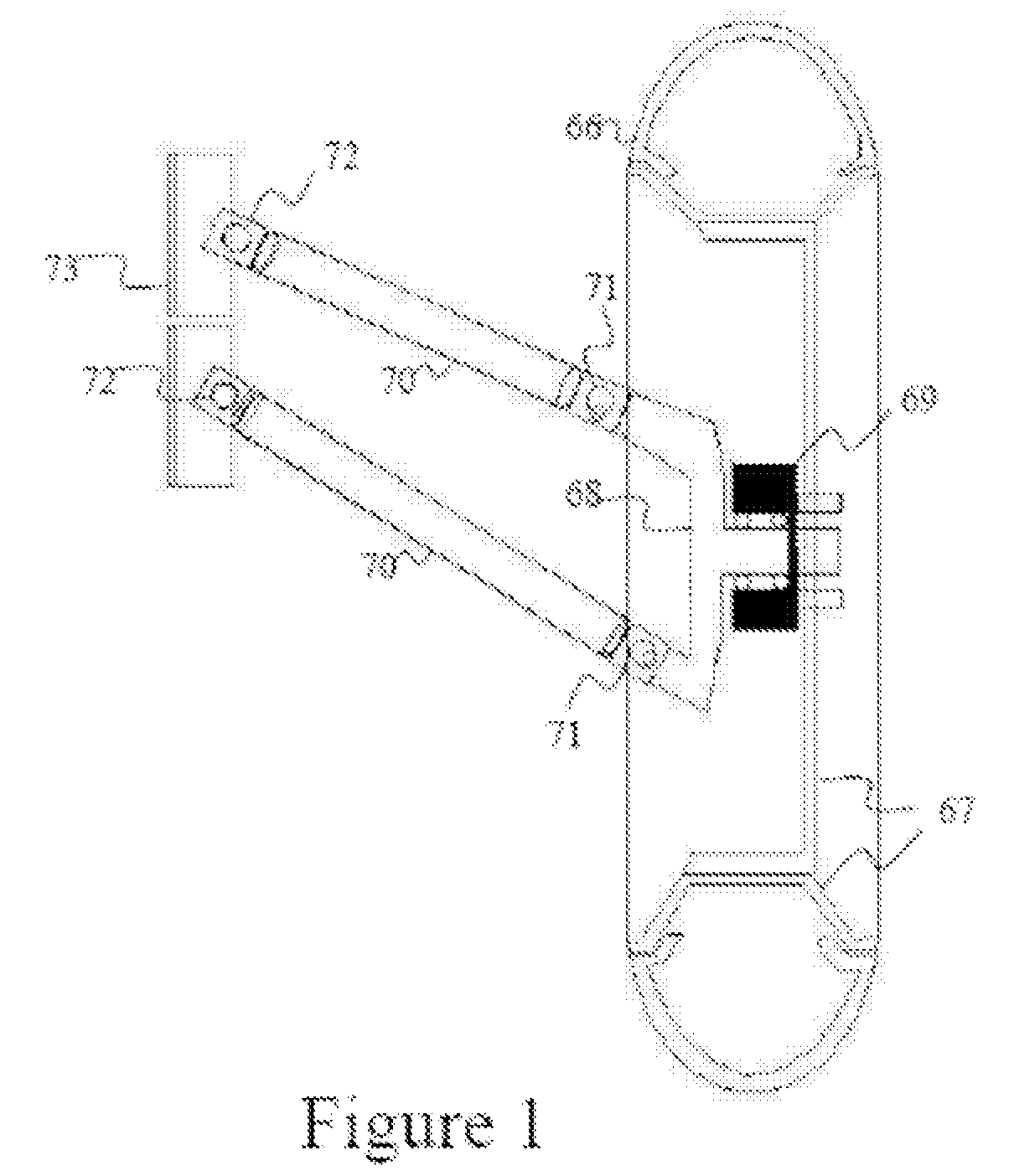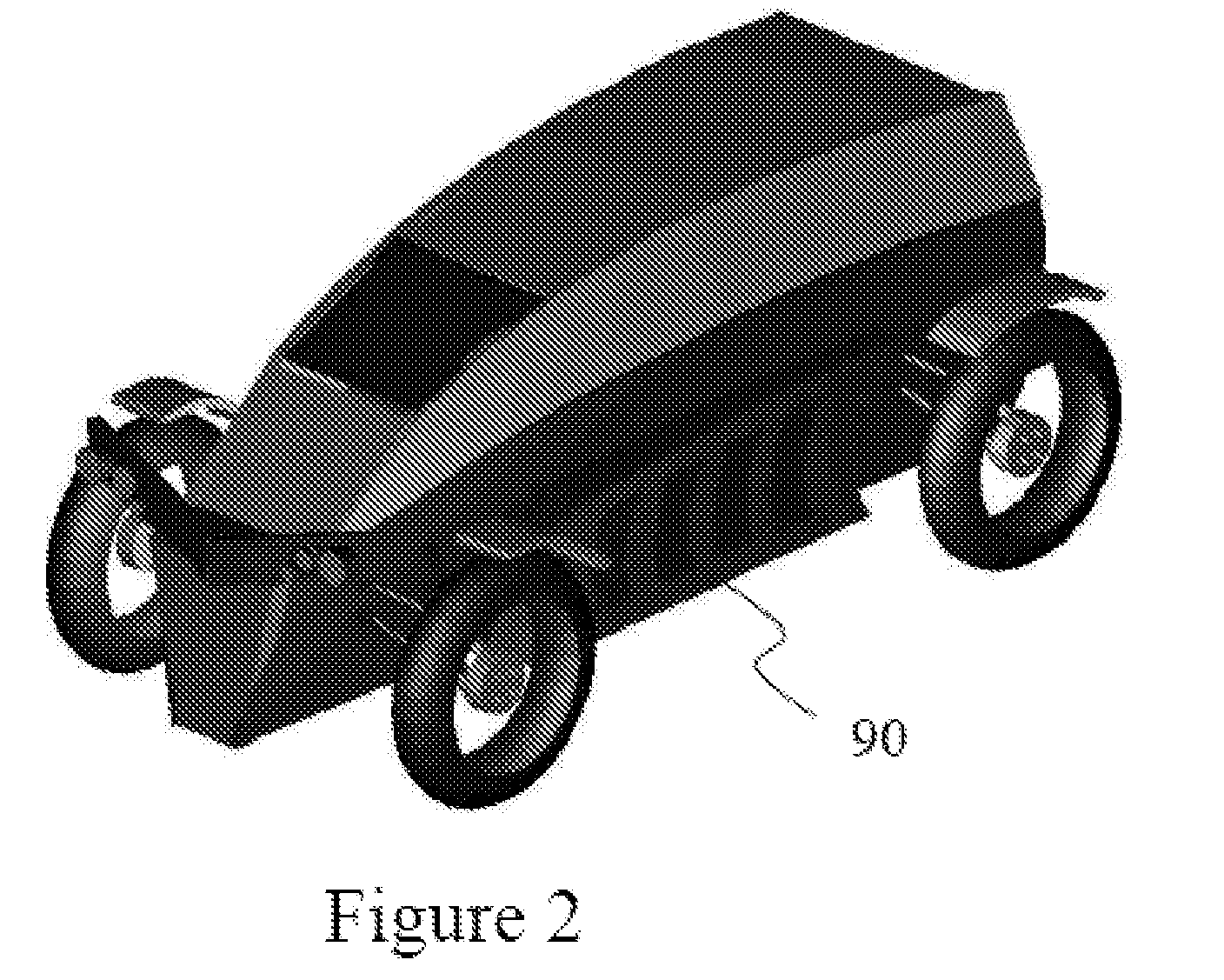Safe, Super-efficient, Four-wheeled Vehicle Employing Large Diameter Wheels with Continuous-Radius Tires, with Leaning Option
a four-wheeled vehicle, super-efficient technology, applied in the direction of vehicular safety arrangments, electric devices, propulsion parts, etc., can solve the problems of affecting the ultimate goal of lowering the total cost of ownership, affecting the cost, and automobiles designed for 4-5 occupants, etc., to achieve advanced cornering capability, transfer system, and added driving excitement
- Summary
- Abstract
- Description
- Claims
- Application Information
AI Technical Summary
Benefits of technology
Problems solved by technology
Method used
Image
Examples
Embodiment Construction
[0076]Vehicle power consumption is expressed as the sum of inertial, rolling, grade, and air drag resistances, accompanied by accessories power usage.
Pload=Pinertia+Ptires+Pgrade+Pdrag+Pacc
Where,
Pinertia=0.5 M[Δv2 / Δt]
Ptires=CπM gv (also stated as the tire rolling friction)
Pgrade=M gv sin(θ) (θ is the grade angle)
Pdrag=0.5ρCDAv3 / 1000
Pacc=Palterator+Pair conditioning
[0077]Inertial, rolling and grade resistance terms dominate power consumption in city driving (typically at least 70% when air conditioning is operating, and up to 90% without air conditioning). Dependent upon grade work associated with a particular geography, these mass-dependent terms commonly comprise 40% of the power load on the highway.
[0078]Underpinning the aforementioned automobile limitations, the current design assumption of a “heavyweight” (2500-4000 pound) vehicle causes designers to select “heavyweight” automobile wheels and tires (typically 40-60 pounds in combined weight). Suspension components are accordin...
PUM
 Login to View More
Login to View More Abstract
Description
Claims
Application Information
 Login to View More
Login to View More - R&D
- Intellectual Property
- Life Sciences
- Materials
- Tech Scout
- Unparalleled Data Quality
- Higher Quality Content
- 60% Fewer Hallucinations
Browse by: Latest US Patents, China's latest patents, Technical Efficacy Thesaurus, Application Domain, Technology Topic, Popular Technical Reports.
© 2025 PatSnap. All rights reserved.Legal|Privacy policy|Modern Slavery Act Transparency Statement|Sitemap|About US| Contact US: help@patsnap.com



